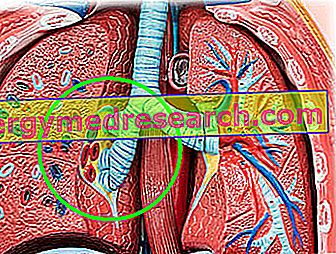During the follicular phase of the ovarian cycle, the growth and differentiation of the follicles are processes subjected to a delicate and precise balance between the levels of circulating hormones and the production of their receptors in the follicular cells. If the levels of circulating hormones and the appearance of their receptors coincide, then the follicular development can continue; vice versa, if this condition is not reached, the follicles undergo degeneration and formation of atretic ovary bodies.
Hormonal regulation is a fundamental mechanism for controlling the ovarian cycle.
There are five hormones that participate in the complex process of positive and negative feedback to regulate folliculogenesis:
- Gonadotropin-releasing hormone (GnRH) secreted by the hypothalamus
- follicle stimulating hormone (FSH)
- luteinizing hormone (LH)
- estrogen
- progesterone
The hormones produced by the pituitary gland (FSH and LH) and the hormones produced by the ovary (estrogen and progesterone) have antagonistic effects (negative feedback control).
At the same time, to transform the continuous production of primary follicles into the periodic phenomenon of ovulation, at least two positive feedback mechanisms must intervene:
- antral phase: exponential production of estrogens;
- preovulatory phase: exponential production of FSH and LH.

Oogenesis and follicular development
Follicle-stimulating hormone ( FSH ) is a protein hormone that is secreted by the anterior pituitary lobe and acts on the gonads. FSH secretion begins to increase in the last days of the menstrual cycle, and is higher during the first week of the follicular phase. Increased FSH levels allow the recruitment of approximately 10 follicles in the antral phase (Graaf follicles) for entry into the menstrual cycle. These follicles, induced by folliculogenesis, are in competition with each other for domination (only one mature egg will be released during ovulation).
The FSH hormone binds to the receptors of granulosa cells, promoting their growth and proliferation, causing an increase in the size of the follicles themselves. Furthermore, the same hormone induces the expression of receptors for the luteinizing hormone (LH) on the granulosa cell membrane in the developing follicles.
Under the influence of FSH, ? The enzyme estrogen synthase and cytochrome P450 are activated, which stimulate the granulosa cells by estrogen secretion.
This increase in the level of estrogen stimulates the production of gonadotropin-releasing hormone ( GnRH ), which induces the release of FSH and LH gonadotropins from the anterior pituitary lobe, which exert a stimulating effect on the growth of the follicle.
The luteinizing hormone ( LH ) has the following actions:
- activates androgen synthesis by theca cells (outer layer of granulosa cells). The secreted androgens then lead to the level of the granulosa cells to be converted into estrogens;
- stimulates the proliferation, differentiation and secretion of follicular cells of the theca;
- increases the expression of LH receptors on the granulosa cell membrane.
Increased estrogen
Two or three days before LH levels begin to increase, generally around the seventh day of the cycle, one of the recruited follicles emerges as dominant.
Estrogens have a negative feedback action on the hypothalamus and on the anterior pituitary lobe: the dominant follicle secretes estrogen in large quantities, to a level such that the production of GnRH is suppressed, consequently inhibiting the secretion of LH and FSH.
This decrease in the production of LH and FSH hormones leads to atresia (death) of most non-dominant follicles.
During the initial and intermediate stages of the follicular phase, estrogens promote a variety of physiological changes throughout the body, including changes in the uterine environment characteristic of the proliferative phase.
The same hormones also promote the changes that prepare the body for subsequent menstrual cycle events:
- during the entire follicular phase, raising the level of estrogen in the blood stimulates the formation of a new endometrial layer and the uterus myometrium;
- induce the expression of progesterone receptors on endometrial cells, helping the endometrium to respond to the increasing levels of progesterone during the late proliferative phase and throughout the luteal phase.
Pico of LH and ovulation
At low concentrations, estrogens inhibit gonadotropins, while at high concentrations they stimulate their release. In the late follicular phase, estrogen production increases exponentially, influencing the secretory activity of the hypothalamus and anterior pituitary lobe, and leading to the stimulation of the secretion of the luteinizing hormone (LH).
These events determine a positive feedback circuit: LH levels increase, estrogen secretion is further stimulated, so the release of luteinizing hormone is further promoted. LH secretion increases dramatically, resulting in an ascending phase of plasma LH levels (pre-ovulatory LH peak). Under the influence of the LH peak, the endocrine activity of the theca cells is first stimulated, and then progressively turned off. At this point, the LH hormone causes these cells to synthesize progestogen hormones.
These changes in endocrine activity are accompanied by the resumption of meiosis and the maturation of the cytoplasm of the oocyte, culminating in ovulation.



